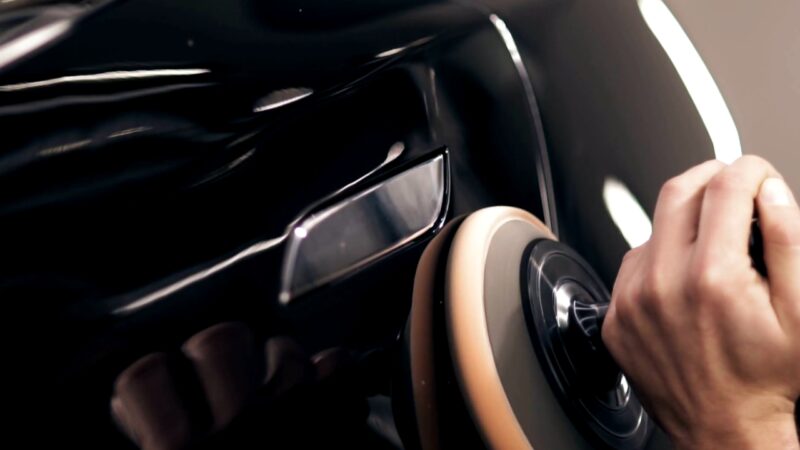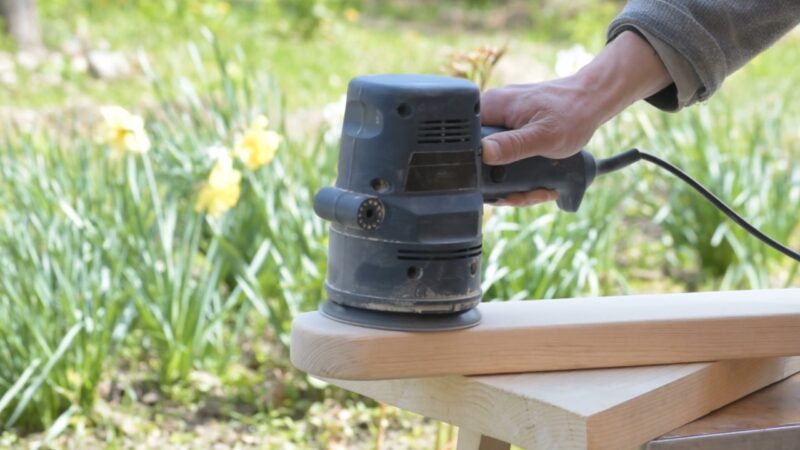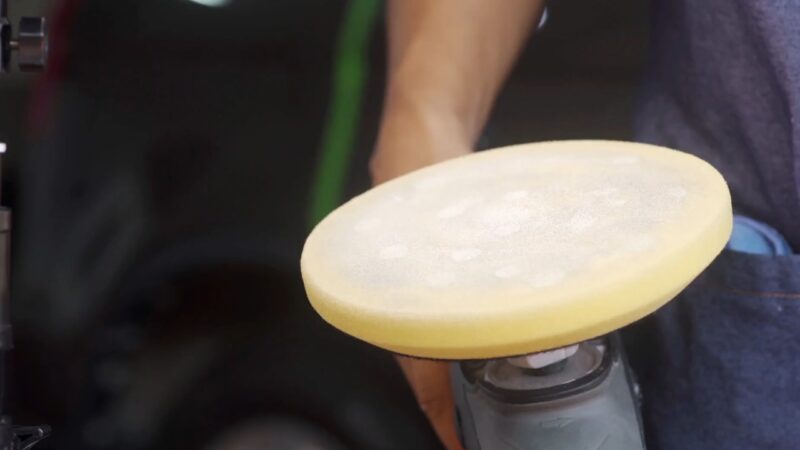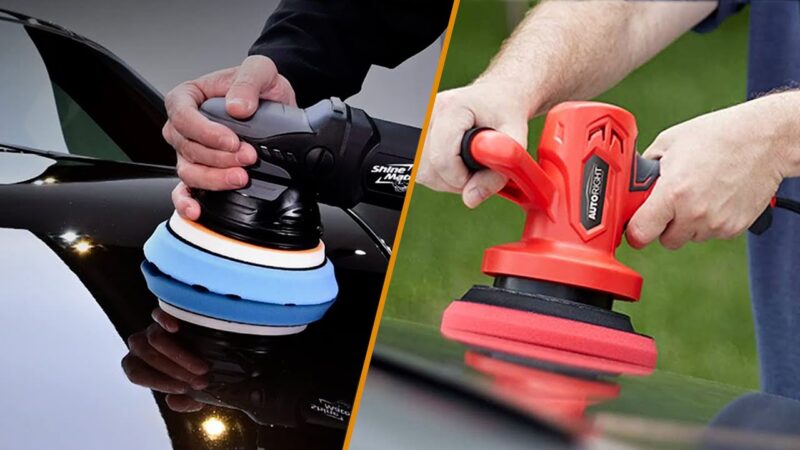Ah, the world of automotive detailing! It’s not just about making cars look shiny; it’s an art and a science. Buffers play a pivotal role in this realm, ensuring that vehicles don’t just gleam but truly sparkle. They’re the unsung heroes in the quest for the perfect finish, restoring surfaces and making them look brand new.
So, why are we here? Well, we’re about to take a look at comparing two giants in the buffering world: dual-action and random orbital. Buckle up!
Fun Fact: Did you know that the first car wax formula was made using animal fats? Thankfully, technology has come a long way since then!
What are They?

In the context of automotive detailing, buffers are tools designed to polish or correct the paintwork on a vehicle. They’re the magic wands that can erase imperfections, bringing out the true beauty of a car’s paint.
Their main role? Paint correction and polishing. Imagine having a canvas with a few smudges. They are the erasers that help clean up those smudges, ensuring the canvas (or in this case, the car) looks pristine.
Pro Tip: Always clean your vehicle thoroughly before using a buffer. This prevents any dirt or debris from scratching the surface during the buffing process.
Dual-Action

Let’s talk about dual-action buffers. These tools move in two simultaneous actions: spinning and oscillating. This unique movement ensures that the buffer doesn’t stay in one place for too long, reducing the risk of paint damage. Here’s why many prefer them:
- Safety First: The oscillating motion means there’s a reduced risk of burning through the paint.
- Choices, Choices: They offer versatility in terms of the pads and products you can use.
- Beginner’s Best Friend: Their user-friendly nature makes them a favorite among those new to detailing.
Fun Fact: The term “dual-action” refers to the buffer’s ability to both orbit and rotate, ensuring a safer buffing experience.
Random Orbital

Often simply called “orbital buffers”, have a unique motion. While they spin like most buffers, they also move in a random pattern, hence the name.
This randomness is their strength, as it ensures that no single part of the pad works on the same spot for too long, reducing the risk of paint damage. Here’s why many detailers have one in their toolkit:
- Efficiency is Key: Known for their ability to correct paint swiftly and effectively.
- Swirl-Free Finish: One of the main advantages is the reduced risk of leaving behind holograms or swirl marks, a common issue with other buffers.
- Best of Both Worlds: Whether you’re just starting out or you’ve been detailing for years, random orbital buffers are versatile enough to suit both beginners and pros.
Pro Tip: Always keep the buffer moving. Letting it sit in one spot can lead to paint damage, especially with powerful machines.
When to Choose Random Orbital Buffers
The go-to for many professionals and enthusiasts alike. Why? They’re especially effective when you’re dealing with deeper scratches, oxidation, or more stubborn imperfections. Their random motion ensures that the buffer doesn’t overwork a particular spot, reducing the risk of paint damage.
- Deep Scratches: If your vehicle has some deeper scratches, a random orbital buffer can help minimize their appearance.
- Oxidation: Over time, paint can become oxidized, leading to a dull appearance. Random orbital buffers can help restore the paint’s original luster.
- Versatility: With the right pads and products, these buffers can tackle a range of tasks, from heavy correction to fine polishing.
Pro Tip: Always start with a less aggressive pad and polish combination. You can always switch to something more aggressive if needed, but it’s best to start gentle.
Maintenance and Care
Just like any other tool, the longevity and performance of your buffer depend on how well you maintain it. Proper care ensures consistent results and can save you money in the long run. Here’s how to keep your buffer in top shape:
- Regular Cleaning: After each use, clean the pad thoroughly to remove any product residue. This ensures that the pad remains effective and doesn’t transfer old product onto your vehicle during the next use.
- Inspect for Damage: Before using your, inspect it for any signs of wear or damage. This includes checking the pad, the backing plate, and the machine itself. Using a damaged buffer can lead to inconsistent results or even damage your vehicle’s paint.
- Store Properly: When not in use, store in a cool, dry place. Avoid leaving it in direct sunlight or in damp areas, as this can degrade the machine’s components over time.
- Replace Pads Regularly: Over time, buffer pads can wear out. It’s essential to replace them regularly to ensure optimal performance. Always have a few spare pads on hand, so you’re not caught off guard.
Pro Tip: Investing in a high-quality buffer bag or case can protect your machine from dust, moisture, and accidental drops, extending its lifespan.
FAQ
What is the primary purpose of using buffers in automotive detailing?
They are used to polish or correct the paintwork on a vehicle, helping to remove imperfections and enhance the overall appearance.
Can I use both dual-action and random orbital buffers on the same vehicle?
Yes, you can. Depending on the specific needs of the detailing job, professionals often use both types to achieve the desired finish.
Is it possible to damage my car’s paint with a buffer?
Yes, if used incorrectly or with the wrong products, they can cause paint damage. It’s essential to understand the tool and use proper techniques.
How often should I use a buffer on my vehicle?
The frequency depends on your vehicle’s condition and your desired level of finish. However, for regular maintenance, a thorough buffing once or twice a year is often sufficient.
Are there specific brands of buffers that professionals recommend?
There are several reputable brands in the market, and the best one often comes down to personal preference, budget, and specific needs. It’s always a good idea to read reviews and seek recommendations.
Do I need to use different pads with different buffers?
Yes, each type may require specific pads designed for its motion and purpose. Always ensure you’re using the correct pad for your buffer and task.
Wrapping It Up
So, we’ve journeyed through the world of dual-action and random orbital buffers, understanding their strengths and ideal scenarios. The choice between the two often boils down to personal preference and the specific needs of the detailing job at hand.
Whether you’re a seasoned pro or just starting out, the key is to understand your tools and use them effectively. Remember, it’s not just about the tool but also the technique!

